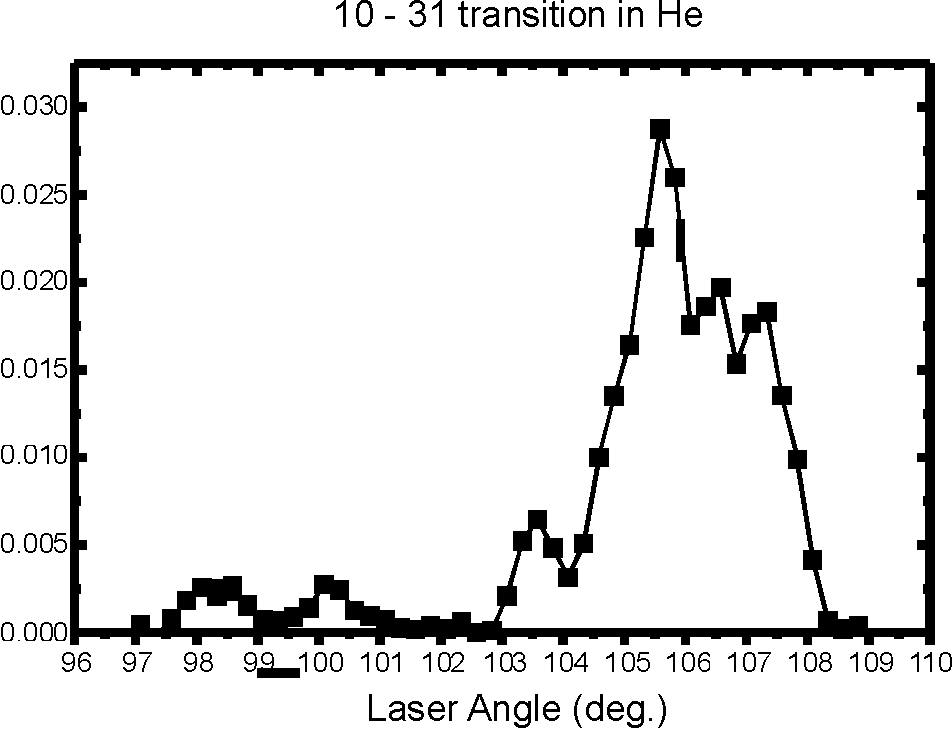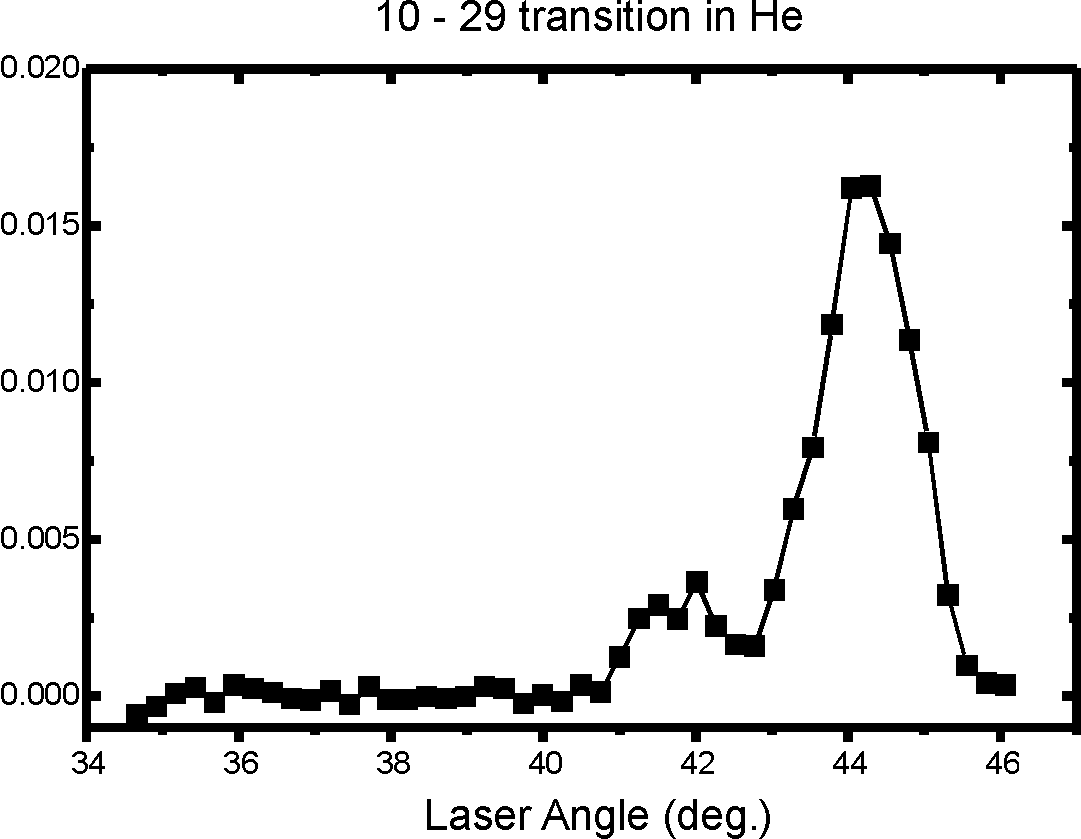
M distributions:
The following graph shows the 10-31 transition in He. The axis is in degrees from antiparallel.

It is possible that the ugly structure of the main peak is due to multiple reflections of the CO2 laser inside the vacuum can. For comparison purposes, I show next the 10-29 transition.

Note now that the main peak is cleaner, and that there are no G states visible. The reason for the lack of the G peaks is probably that the CO2 laser beam is hitting one of the z-stack plates. The angle is very near to where I expect this to happen. Thus, on that side of the mirror, I have a pretty good measure of the largest laser angle which can be used. This is also why I suspect the structure in the 10-31 transition is due to reflections. The z-stack plates are blocking out those reflections from the 10-29 signal. The conditions in the LIR for the two measurements were the same. The only difference between the two transitions is that the 10-29 occures at an angle further from 90 degrees, and where demonstrably the plates start to intersect the beam.